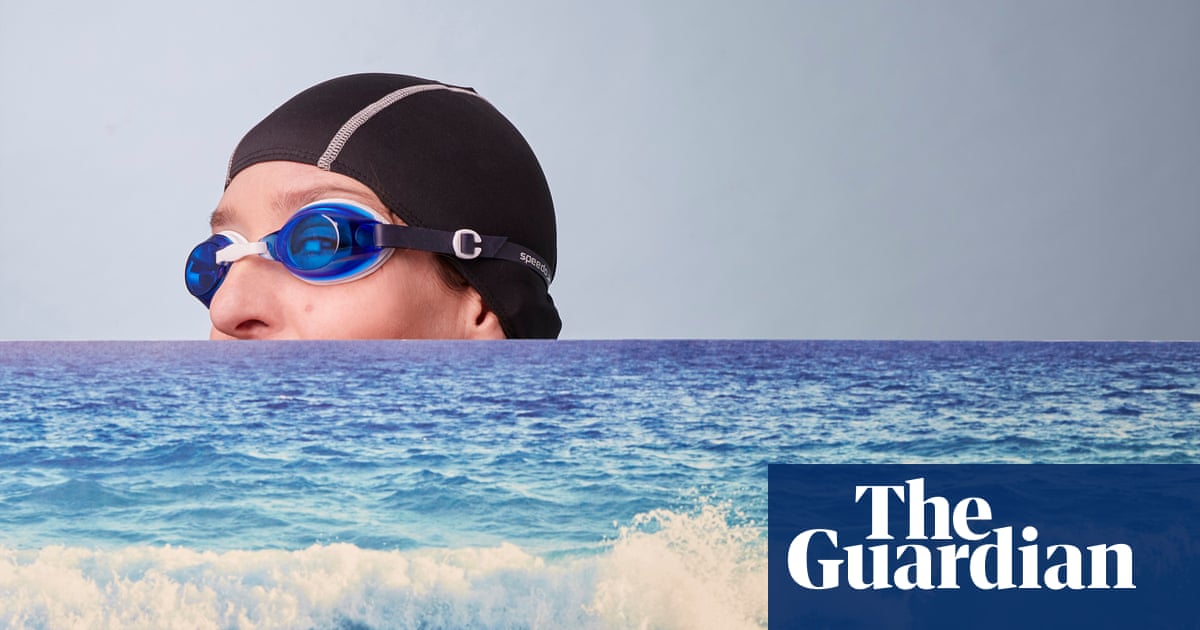
I wanted to see if I could swim a long distance in open water. So I headed to the open sea, ploughing alongside an underpopulated Isle of Wight beach, braving an unseasonal May in a swimsuit, not a wetsuit, guesstimating time and distance to what I thought was around half an hour, and imagined – fondly, groundlessly – was about a kilometre.
On the first day, I discovered I’d been swimming for 10 minutes. Second day, a bit under 12 minutes. Third day, 10 minutes. Not only was I not getting any stronger, I wasn’t getting any less deluded. But there was something else going on, some combination of my own poor technique and the vast unknowability of the ocean, that was actively throwing me off. Getting nowhere on my own, I needed some input from people who knew stuff.
Nathaniel Cole and Peigh Asante run the Swim Dem Crew, a group of social swimmers who do epic open-water adventures (as well as training novices). All their sentences start in exciting ways (“When we did the Dart 10k swim…” “When we were in Finland…”).
It’s all about the arms, Cole tells me. Long-distance running makes sense because you’re using your largest muscles. Endurance swimming makes no sense at all, or not with my arms. It’s a huge amount of body to power along with muscles the size of clementines, and that’s the biceps. My triceps don’t even warrant the name. Cole and Asante train novices with hand paddles, like baseball mitts. The theory is that when you remove them, your body has an ideal efficiency to aim for. “It’s all about how many arm cycles it takes you per length. You want to have as few as possible,” says Cole.
Anything you can do to maximise your stroke, whether it’s technique or brute strength, will be the difference between getting somewhere and getting nowhere. The crew do towing exercises, where you hold on to a partner’s legs while they do arms for a length, and then swap – like a wheelbarrow race.
There’s something else, though: what about the heebie-jeebies? Looking out at the unending space and then longing for land? Even proper swimmers get this: Asante tells me about a swim in Croatia when they went out at 5.30am. “I was swimming along naturally and then the sun came up,” she says. “As soon as I saw how clear the water was, I noticed how deep it was. I’m a confident swimmer, but usually the water’s murky and I never think about it. Suddenly, I could see fish. It made me realise how small I was, how insignificant, a stranger in someone else’s territory.”
I think it’s good for the spirit: you’re meant to break through a fear barrier every day, if you want to feel alive – and it’s hard to see how you do that without interrupting regular life. It’s also good for the fundamental questions of existence: who am I? A tiny speck. What’s my purpose? Something tiny. But until you’ve got some upper-body strength, it’s easy to become discouraged.
I’m going to get some hand paddles.
What I learned
Eat like a rower for endurance swimming: porridge and bananas. True swimmers pack sweets in their wetsuits.
This article contains affiliate links, which means we may earn a small commission if a reader clicks through and makes a purchase. All our journalism is independent and is in no way influenced by any advertiser or commercial initiative. By clicking on an affiliate link, you accept that third-party cookies will be set. More information.
Source: TheGuardian
